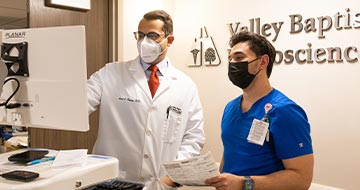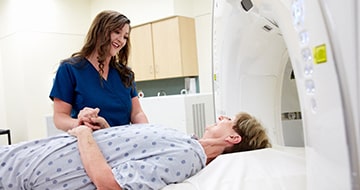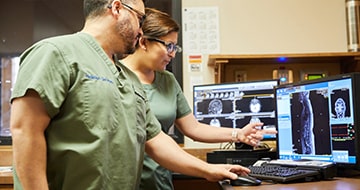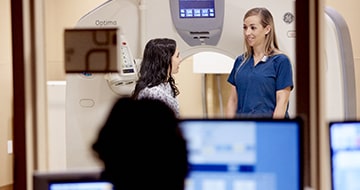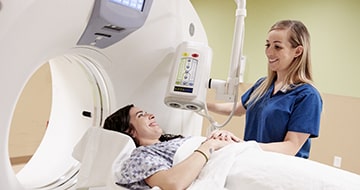Neuroscience Institute at Valley Baptist Health System
The Neurology Intensive Care Unit (Neuro ICU) – the newest addition to the Valley Baptist Health System – is...
For more information about research at Valley Baptist, please call: (855) 720-7448.
To learn more about our care and specialty physicians and staff, please call the Valley Baptist Neuroscience Institute a...
To learn more about endovascular neurology and treatment programs at the Valley Baptist Neuroscience Institute...
To learn more about epilepsy treatment programs and our physicians, at the Valley Baptist Neuroscien...
Our Stroke and Neurological Program is designed for persons who are medically stable, but have limitations due to a stro...
All Services
The Neuro ICU at Valley Baptist Medical Center-Harlingen is now open!
What Is a Ministroke?
You hear the term “stroke” a lot these days. Sometimes people say they had a “ministroke” or “TIA.” You may be wondering, what exactly do these different labels mean, and which ones should we be concerned about? Here’s what you need to know.
TIA or Transient Ischemic Attack is defined by the American Stroke Association as “a temporary blockage of blood flow to the brain.” TIAs do not typically result in permanent damage. However, they can be serious and should not be ignored, as they can indicate that a full-blown stroke is ahead. A TIA is often referred to as a “ministroke,” but a better term is “warning stroke.”
What are the symptoms of a TIA? Actually, stroke and TIA symptoms can vary widely depending on the part of the brain that is affected. Also, other neurological disruptions, such as migraines, minor seizures and low blood sugar can mimic TIA symptoms. The primary distinguishing feature of a TIA or stroke is that it stems from decreased blood flow located in one particular blood vessel in the brain. Therefore, the effects tend to be associated with a specific brain function, such as speech, vision, sudden isolated weakness, numbness, or drooping on one side of the body or face.
How are TIAs diagnosed and treated? To determine if a TIA or stroke has occurred, it’s important to be evaluated immediately by a doctor at a hospital emergency room or neurology department. Knowing the timing, duration and specific physical details of your experience will be helpful to the doctor.
Tests, such as CT scans or MRI scans, may be performed to help identify a brain injury or an area where blood flow has been compromised. The goal of TIA treatment is to prevent a full-fledged stroke. Depending on the extent of the blockage, doctors may prescribe a clot-dissolving drug. If one of the carotid arteries is significantly narrowed, a procedure to decrease the blockage may be recommended to help prevent future TIAs or strokes.
How is a stroke treated? If it is determined that the event is a stroke, anti-clotting medications and drugs to lower blood pressure and cholesterol may be part of the ongoing treatment. At the first indication of a stroke, getting treatment within three hours is vital for improving long-term outcomes and reducing the risk of permanent disability.
What are the risk factors for TIAs? People who have TIAs often have other cardiovascular risk factors. These can include:
- Being middle-aged or older
- Having diabetes
- Having high blood pressure
- Abnormal cholesterol
- Being a smoker
- Those who get little or no exercise
What can help prevent TIAs and stroke? You’ve heard it before, but these behaviors can help prevent or lower the risks of many health issues, including stroke:
- Eating a healthy diet, rich with fruits and vegetables and low in saturated fats.
- Getting regular exercise
- Not smoking

